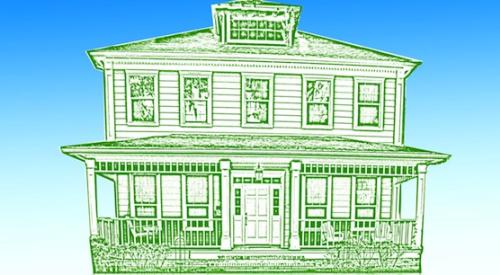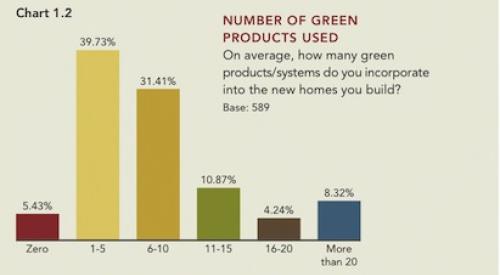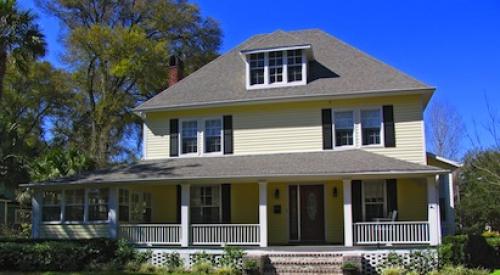Housing market measures have traditionally fallen into three segments:
- Housing demand: A calculation of the number of housing units needed based on job and population growth, as well as the demand for second homes and the need to replace aging housing stock
- Housing supply: The number of homes being built
- Home price: The equalizer: when demand exceeds supply, prices go up, and vice versa. Mortgage rate changes and investor activity also affect prices.
Although these measures still apply, we have introduced to our clients an additional demand/supply measure that also needs to balance. It is a measure of demand and supply from the consumer's perspective. Consider the following:
- Housing demand: The number of people who: a) want to buy a home; b) can afford to buy a home; and c) will buy in your location. This calculation includes investors (who are disappearing or gone).
- Housing supply: The number of new and resale homes available for sale in a buyer's price range and desired location.
For each of your communities, you should define the submarket where most buyers are considering purchasing and then determine how many transactions occur each month in your price range. That is the demand. Then, determine the number of new and resale homes available for sale. That is the competitive supply. Now, you are viewing the market as your buyers see the market.
Then address the next question: what is your monthly capture rate of these buyers? If it's 10 percent of the demand and you are only 5 percent of the supply, you are doing something right. However, if you need to be 15 percent of the demand to meet your business plan, you need to ask yourself why the other 90 percent of buyers are purchasing elsewhere and fix the problem if you can.
Phoenix Example  |
With 5 percent annual growth, the Phoenix job market continues to boom, adding 89,000 jobs in the last year. Based on Phoenix's historical ratio of 1.3 jobs per household, that implies a need for approximately 70,000 housing units. With 59,000 permits issued in the last year, it would appear that Phoenix's housing market should be strong. Phoenix builders, however, know the opposite is true.
Phoenix has two problems: the location of the supply, which is chiefly in very outlying areas, and the price of the supply, which rose nearly $90,000 over the last two years. With more new home communities opening up and investors trying to sell their homes, the supply has ballooned as well. Builders in the outlying areas of Phoenix are rapidly adjusting price, offering incentives, adjusting product, increasing advertising and doing whatever they can to sell homes. Over time, these outlying areas will become vibrant suburbs, but most builders can't wait for this to develop.
| Employment | Affordability | Permits | |||||||||||
| Short-Term Outlook/Grade | Buyer/Seller Imbalance | 1-Year Payroll Employment Growth | 1-Year Growth Rate | Unemployment Rate | Median Resale Home Price | Resale Housing Costs as % of Income | Housing Cycle Barometer | 12-Month Single-Family Permits | 1-Year Single-Family Growth | 12-Month Total Permits | Total Permits as % of Peak Permits | ||
| 1 | Atlanta | B | 54,100 | 2.3% | 4.5% | $174,060 | 28% | 5.4 | 60,503 | 4% | 74,559 | 100.0% | |
| 2 | Houston | A | 65,400 | 2.8% | 5.1% | $151,600 | 26% | 5.2 | 55,172 | 13% | 68,079 | 90.6% | |
| 3 | Phoenix | B+ | ã | 88,500 | 5.0% | 3.1% | $264,000 | 41% | 6.6 | 50,078 | -17% | 59,259 | 85.6% |
| 4 | Riverside-SB | D | ã | 36,200 | 3.0% | 4.9% | $387,750 | 67% | 9.5 | 41,278 | -5% | 47,357 | 82.1% |
| 5 | Dallas | A | ã | 52,400 | 2.7% | 5.0% | $160,400 | 25% | 4.2 | 31,546 | 2% | 39,619 | 53.6% |
| 6 | Chicago | B | ã | 44,900 | 1.2% | 4.4% | $256,000 | 42% | 6.9 | 26,966 | -5% | 45,581 | 100.0% |
| 7 | Las Vegas | B | ã | 51,200 | 5.9% | 4.1% | $306,000 | 49% | 7.2 | 26,840 | -7% | 40,302 | 100.0% |
| 8 | Orlando | B+ | ã | 37,600 | 3.6% | 3.2% | $250,000 | 44% | 7.5 | 25,563 | -3% | 34,521 | 95.5% |
| 9 | Tampa | B+ | 27,600 | 2.1% | 3.4% | $200,200 | 39% | 7.0 | 23,410 | -10% | 27,621 | 72.8% | |
| 10 | Charlotte | B+ | 10,800 | 1.4% | 4.8% | $165,000 | 27% | 3.0 | 20,779 | 17% | 24,246 | 100.0% | |
| 11 | Austin | B | 19,400 | 2.8% | 4.2% | $180,000 | 31% | 5.2 | 19,353 | 23% | 27,882 | 100.0% | |
| 12 | Fort Worth | B | ã | 16,600 | 2.0% | 4.9% | $118,400 | 20% | 5.1 | 18,697 | 14% | 21,942 | 57.0% |
| 13 | Fort Myers | C+ | ã | 10,200 | 4.6% | 2.8% | $250,000 | 44% | 6.7 | 18,484 | -16% | 25,011 | 85.3% |
| 14 | Washington, D.C. | C+ | ã | 58,600 | 2.5% | 3.3% | $420,615 | 51% | 9.2 | 18,429 | -24% | 26,527 | 69.8% |
| 15 | Denver | A | ã | 22,600 | 1.9% | 4.8% | $249,900 | 38% | 5.8 | 15,906 | -11% | 20,138 | 70.5% |
| 16 | Jacksonville | C+ | ã | 17,900 | 2.9% | 3.6% | $189,900 | 32% | 6.2 | 15,067 | -14% | 20,953 | 83.5% |
| 17 | San Antonio | B | 15,400 | 2.0% | 4.8% | $143,400 | 28% | 5.2 | 14,916 | 7% | 20,969 | 94.0% | |
| 18 | Minneapolis | B+ | ã | 46,800 | 2.7% | 3.3% | $250,000 | 33% | 6.1 | 14,433 | -19% | 19,118 | 67.9% |
| 19 | Nashville | A | 18,100 | 2.5% | 4.7% | $160,000 | 29% | 5.5 | 14,202 | 3% | 15,739 | 85.7% | |
| 20 | Raleigh-Cary | A+ | 19,700 | 4.2% | 3.5% | $182,000 | 28% | 2.9 | 13,779 | 3% | 16,977 | 100.0% | |
| * Annual Mortgage Costs + 17 of the down payment divided by income ** Proprietary affordability scale, with 0 meaning most affordable time since 1983, 5 meaning median affordability, and 10 meaning least affordable time. ** Peak activity since 1985. Sources: Bureau of Labor Statistics; Census Bureau through the month ending August 2006; John Burns Real Estate Consulting | |||||||||||||
| Author Information |
| John Burns helps many of the largest companies in the industry with strategy and monitoring market conditions. He can be reached at jburns@realestateconsulting.com. |











